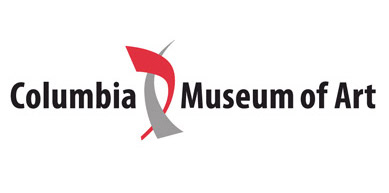Boundary-Pushing jazz Harmonicist Frédéric Yonnet Closes out the CMA Jazz on Main Season
Reprinted from FreeTime, written by Kyle Petersen, May 10, 2017
The harmonica as an instrument in popular music has always been a bit of an oddity. Prized by early roots musicians because of it’s compact size and cheapness, it’s long been a mostly accessory piece for rock and R&B artists since the ’60s and ’70s, mostly those who hew closer to those traditionalists. As time has gone on, it seems like the instrument’s prominence has waned. Now, when it pops up on something like, say, Outkast’s “Rosa Parks,” its feels like the anachronism is part of the point.
French-born jazz harmonicist Frédéric Yonnet, who guests in the Columbia Museum of Art’s Jazz on Main season closer, isn’t having that though. The 44-year-old savant has spent his entire career confounding expectations that surround the humble instrument, dazzling audiences with his technical prowess and free-wheeling expressiveness.
Not merely confined to jazz or blues, Yonnet has made a name for himself collaborating with the likes of pop artists like Ed Sheeran and John Mayer, hip neo-soul pioneers like Erykah Badu and India.Arie and with stately classical institutions like the National Symphony Orchestra and the Dayton Philharmonic. Oh, and R&B multi-instrumentalist legends like Prince and Stevie Wonder. In other words, he doesn’t take much stock in the traditional genre limitations that the harmonica typically has.
“I have to live by this philosophy, all throughout my career, that if you free your mind, your harp will follow,” he explains. “The harmonica is a free reed instrument, so I call it a free-losophy. If you let the music come to the instrument rather than let the instrument go to the music, you can let jazz, blues, R&B, reggae make a space for the harmonica and you’ll fit naturally within it. Most harmonica players go the other way — they will listen to the music where the harmonica has been featured most successfully and try to reproduce and emulate that. And that’s how you get anchored into only playing blues, or R&B or rock with a chromatic harmonica.”
Yonnet cites Wonder and Belgian jazz player Toots Thielemans as early inspirations, but you can tell that there’s a certain wonder in the instrument itself that carries him through. From his early days of “obsession” where he would practice 12 hours a day for weeks at a time up to his solo albums that are a kind of worship of the instrument, Yonnet is truly in a lifelong love affair with the harmonica.
“The sounds that come out of it — there’s a kind of disconnect between what you see and what you hear,” he says. “The fact that when you hear somebody playing the harmonica, you don’t see the instrument, but you hear this amazing range of sounds and emotions and colors. And they are coming from this mysterious box. And when you see a harmonica player, it looks like most of the music is coming out of their hands. You don’t really see the instrument. That creates a very mysterious perspective of what’s happening on stage.”
True to this thought, Yonnet is a special live performer, capable of wringing every bit of dazzle and emotion possible from that short piece of metal and wood. His performance prowess is really how he ended up on stage with Wonder or in the studio with Prince, he notes. And it’s at the center of his current collaboration with pianist Noel Freidline, CMA Jazz on Main’s artistic director, who will lead Yonnet’s accompanying band.
“I’m really looking forward to coming to Columbia for the show,” the harmonicist enthuses. “We have a guideline of what’s going to happen, but we’re hoping because of the connection we had the first time we performed together, we’ll have a lot of spontaneity come along the way and that that will take us places that we are all excited about. We’ll explore the unknown and have a musical conversation.”
What: Jazz on Main
Where: Columbia Museum of Art, 1515 Main St.
When: Friday, May 12, 7:30 p.m.
Price: $35 ($28 members; $5 students)
More: 803-799-2810, columbiamuseum.org

